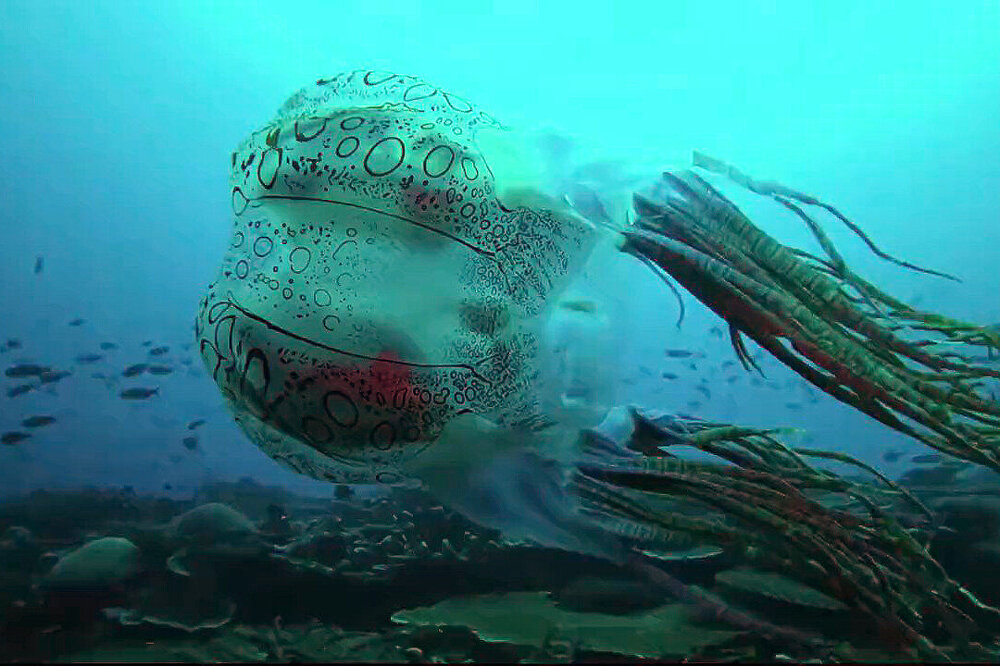The rarest creature in the world, which was encountered for the third time in the ocean (5 photos + 1 video)
These wonderful creatures have been seen only three times in the entire history of the Earth. So our guest today is rare not only in terms of the degree of unusualness of his appearance, but also in the literal sense of the word rare. 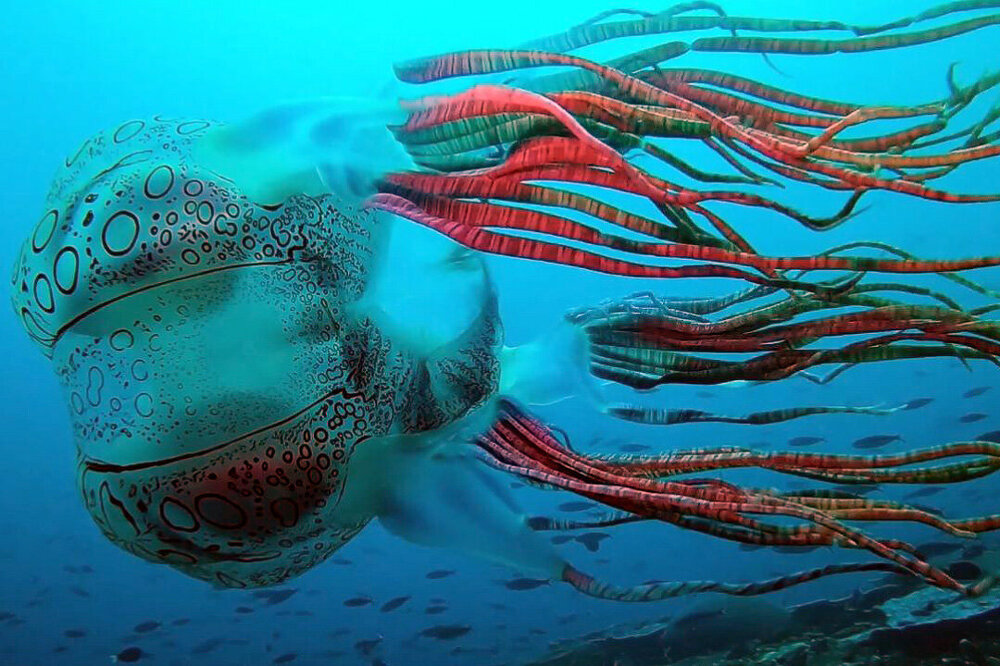
Scientists first discovered it in May 1997 off the coast of Australia, not far from the Great Barrier Reef. The second time the creature caught people’s eyes almost a quarter of a century later was in 2021. And finally, as recently as September 2023, it was again greeted (no, not with a standing ovation) by divers armed with underwater cameras. 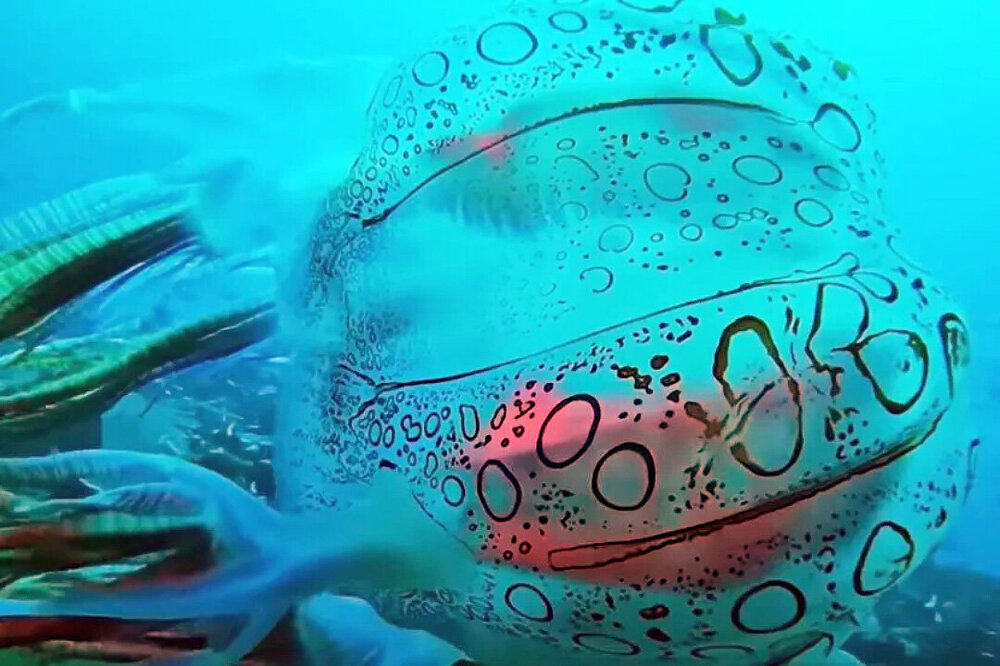
Scientists have been trying to figure out what genus it should belong to for a long time, and finally decided on it, assigning it the specific name Chirodectes maculatus, which can be loosely translated as “Spotted handfish.”
So what is this miracle (and what is it eaten with, if you are lucky enough to find it)? - you ask. Not much is known about him. 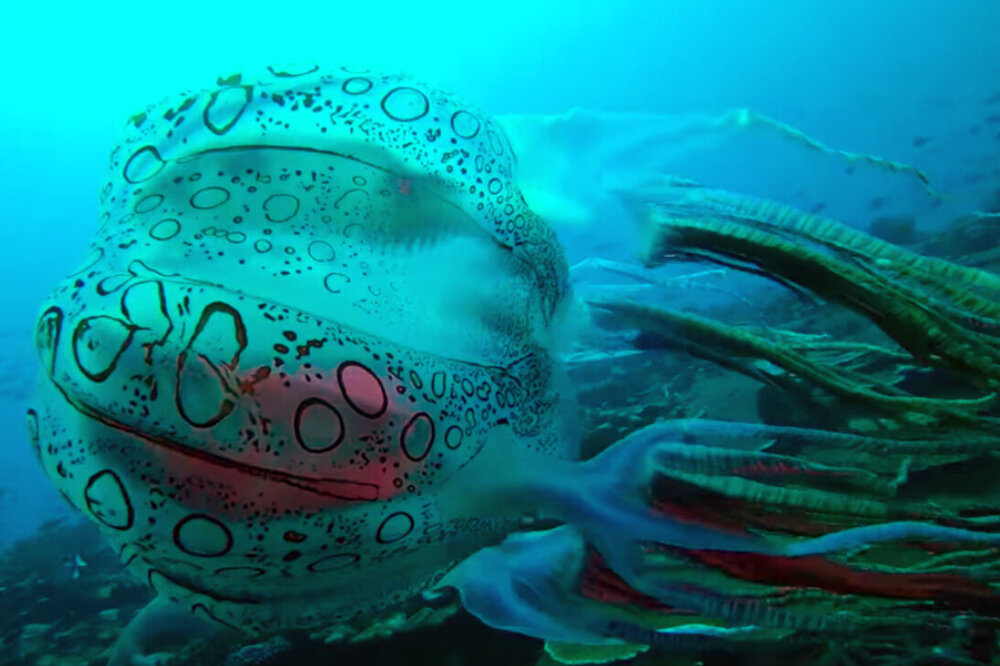
So, the genus Chirodectes, of which our hero is the only representative, belongs to the family Chirodropidae, which in turn belong to a whole class of creatures known as box jellyfish. As you can guess, this class is named by combining two words "cube" and "jellyfish". Most of the jellyfish in this class actually have the shape of a bell in the form of a cube, and not the usual “umbrellas” that represent jellyfish from our latitudes.
Box jellyfish have a rather complex structure and the first thing that distinguishes them from other jellyfish is that they are quite active and skilled swimmers who can not only swim quickly, but also change direction, changing the shape of the dome opening and the direction of the jet stream caused by contractions of their muscles. 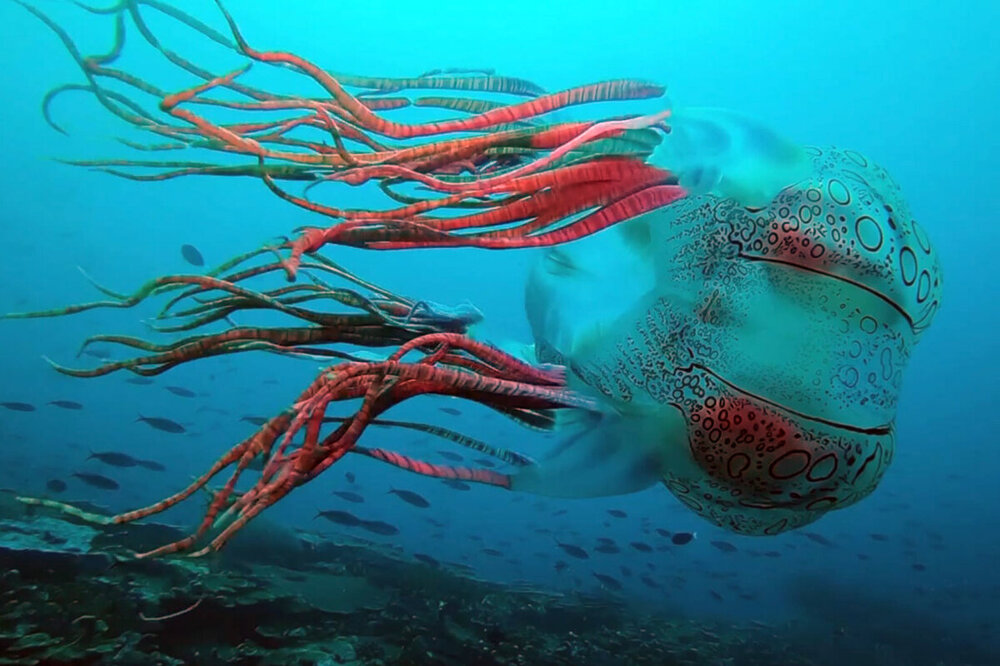
Our bat has four bases under its dome, from which come bundles of tentacles - real batteries, charged to the brim with stinging cells.
Another interesting feature that distinguishes box jellyfish from others is their well-developed vision and nervous system. This is no longer a stupid bag of jelly, floating aimlessly in the ocean at the behest of the currents. This organism is already equipped with an organ of balance and an organ of vision, consisting of six eyes, two of which are complex, have a cornea, a lens and a retina, and are also capable of distinguishing several colors.
These jellyfish see the diver and realize the potential danger, immediately swimming away from him. Box jellyfish also have the rudiments of sexual behavior and a semblance of mating games. 